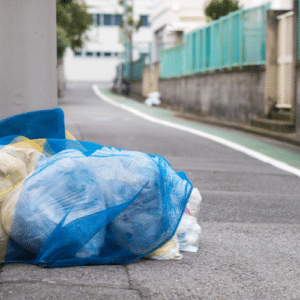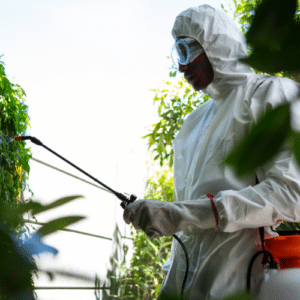
16 Aug Citywide Pest Control
City Pest Control Hurdles
Urban areas in Broward County are bustling with activity and vibrant life. This makes them an attractive environment for various pests. As a family-owned organic pest control company, we understand the unique challenges of managing pests in such a dynamic setting. Addressing these challenges effectively is crucial for maintaining a healthy and comfortable living and working environment.
Broward County’s urban areas are characterized by their high population density. More people mean more opportunities for pests to thrive. With so many people in close proximity, pests can quickly spread from one property to another. This density also creates more interactions between humans and pests, which complicates pest control efforts.
Limited space in urban environments can make it difficult to implement pest control measures. High-rise buildings, narrow alleys, and crowded areas provide fewer options for pest control professionals to work effectively. This limitation requires creative solutions to manage pest populations and ensure thorough coverage.
Climate-Driven Pest Problems
Broward County’s warm, humid climate is perfect for pests. The combination of high temperatures and frequent rainfall creates an ideal breeding ground for various pests. Mosquitoes, cockroaches, and termites, in particular, thrive in this environment. Their activity often increases during the rainy season, making it even more challenging to control their populations.
These environmental factors can also affect the effectiveness of pest control treatments. Pests may adapt to treatments, requiring ongoing adjustments and more frequent interventions. This dynamic environment demands a proactive approach to pest management to stay ahead of potential infestations.
Urban infrastructure in Broward County poses its own set of challenges for pest control. The dense network of buildings, sewers, and utilities creates numerous hiding spots for pests. These areas can be difficult to access, making it challenging for pest control professionals to treat effectively.
Furthermore, older buildings may have structural issues, such as cracks and gaps, that pests can exploit. Maintaining the integrity of these structures is essential for preventing pest entry and ensuring long-term effectiveness of pest control measures.
Diverse Urban Pest Issues
Urban areas in Broward County are home to a diverse range of pests. Common pests include rodents, ants, cockroaches, termites, and mosquitoes. Each of these pests presents unique challenges that require targeted approaches. For example, rodents are adept at finding entry points into buildings, while termites can cause significant structural damage if not managed promptly.
Understanding the specific behaviors and needs of each pest species is crucial for developing effective control strategies. Professional pest control services are often needed to address these issues comprehensively and to tailor treatments to the particular pests encountered.
Human activity plays a significant role in urban pest control. The presence of outdoor dining areas, improperly managed garbage, and food waste can attract pests. In densely populated areas, the challenge of managing waste effectively is compounded by high foot traffic and a high number of dining establishments.
Proper waste management and sanitation are critical in preventing pest infestations. Ensuring that garbage is stored and disposed of correctly can reduce the likelihood of attracting pests and help maintain a cleaner urban environment.
IPM for Urban Environments
Integrated Pest Management (IPM) is a comprehensive approach to pest control that combines multiple strategies. IPM focuses on long-term prevention and uses a combination of biological, mechanical, cultural, and chemical methods. This approach minimizes the reliance on chemical treatments and promotes environmentally friendly solutions.
IPM involves monitoring pest populations, identifying pest species, and implementing control measures tailored to specific pest problems. By addressing the root causes of pest issues and using a variety of control methods, IPM can effectively manage pest populations while minimizing environmental impact.
Regular inspections and monitoring are essential for effective urban pest control. Routine inspections help detect pest problems early, before they become severe. This proactive approach allows for timely intervention and reduces the risk of extensive infestations.
Pest control professionals use various tools and techniques for monitoring pest activity. These may include traps, bait stations, and visual inspections. Regular monitoring helps track pest populations and assess the effectiveness of control measures, enabling adjustments as needed.
Waste Management and Pest Prevention
Sanitation and waste management are crucial in preventing pest problems. Proper waste disposal and management practices can significantly reduce the likelihood of attracting pests. Ensuring that garbage is stored in sealed containers and disposed of regularly helps prevent pests from finding food sources.
In addition to waste management, maintaining cleanliness in and around properties is essential. Regular cleaning of food preparation areas, dining spaces, and common areas can help eliminate potential pest attractants and reduce the risk of infestations.
Exclusion involves sealing entry points to prevent pests from entering buildings. This includes closing gaps, cracks, and other openings that pests might use to gain access. Regular maintenance and inspections of building exteriors are important for identifying and addressing potential entry points.
Proper sealing techniques and materials are crucial for effective exclusion. Ensuring that all potential entry points are addressed can prevent pests from entering and causing problems within the building.
Education and Treatment
Targeted treatments involve using specific products and methods to address particular pest issues. This approach ensures that treatments are effective and focused on the pests causing problems. Eco-friendly and organic treatments are often used to minimize environmental impact and promote safer pest control solutions.
Professional pest control services are equipped to handle various pest problems and can provide targeted treatments based on the specific needs of each situation. This expertise helps ensure that pest control measures are both effective and safe.
Educating residents and business owners about pest prevention is an important aspect of pest control. Public education can help individuals understand the factors that contribute to pest problems and how to take preventive measures.
Community outreach programs and informational resources can provide valuable information on pest prevention and management. By increasing awareness, individuals can take proactive steps to reduce the likelihood of pest issues and contribute to a cleaner, healthier urban environment.
Conclusion
Urban pest control in Broward County presents unique challenges due to high population density, environmental factors, and diverse pest species. Addressing these challenges requires a comprehensive approach that includes regular inspections, effective sanitation, and targeted treatments.
By implementing strategies such as Integrated Pest Management (IPM), exclusion, and public education, homeowners and business owners can effectively manage pest populations and maintain a healthy living and working environment. Proactive measures and professional pest control services play a crucial role in ensuring that urban areas remain free of pests and continue to thrive.
For those dealing with pest issues, seeking the assistance of a professional pest control company can provide valuable expertise and solutions. Taking action early and using effective pest management strategies can help prevent more significant problems and ensure a cleaner, more comfortable urban environment for all.






No Comments